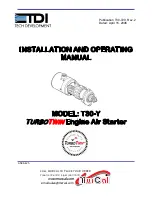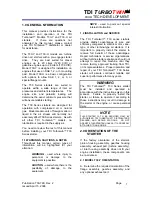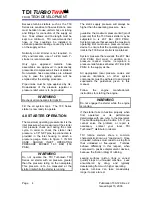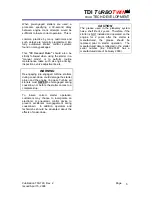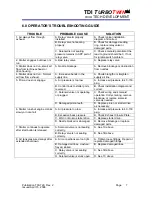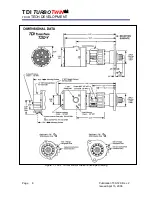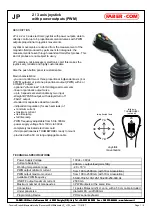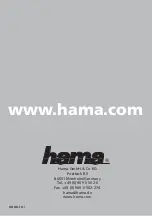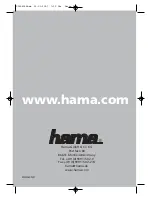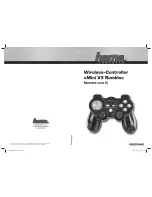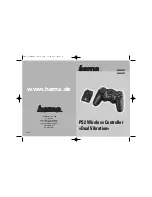
TDI T
URBO
T
WIN
™
FROM
TECH DEVELOPMENT
Page
Publication T30-729, Rev. 2
Issued April 15, 2006
4
Because turbine starters such as the T30
Series are sensitive to flow restrictions, care
must be taken to use uniform hose or tubing
and fittings for connection of the supply air
line. Tees, elbows, and line length must be
kept to a minimum. TDI recommends that
hose or flex couplings be installed to
eliminate possible leakage caused by strain
on the supply air line.
Normally an air strainer is not required. In
dirty environments, use of a #40 mesh Y-
strainer is recommended.
Only type approved metallic hose
assemblies are approved in permanently
pressurized compressed air lines of starters.
Non-metallic hose assemblies are allowed
only in case the piping system will be
emptied after the starting procedure.
Pipe unions must be type approved by GL.
Downstream of the pressure regulator a
pressure relief valve is to be provided.
WARNING
Recheck all connections for tight fit.
Fill the air system tank. The T30 Series
starter is now ready to operate.
4.0 STARTER OPERATION
The maximum operating pressure limit is the
inlet pressure when measured at the starter
inlet pressure check port during the crank
cycle. In order to check the starter inlet
pressure, a 1/8" NPT pipe tap connection is
provided in the inlet housing to attach a
pressure gauge. Refer to figure 1. IN NO
CASE SHOULD INLET OPERATING
PRESSURE EXCEED 10.3 BAR (150
PSIG).
WARNING
Do not operate the TDI Turbotwin T30
Series air starter with air pressure greater
than the pressure rating on the nameplate.
This pressure is to be measured at the
starter inlet while the starter is running.
The static supply pressure will always be
higher than the operating pressure. As a
guideline, the maximum pressure limit (proof
pressure) that the T30 Series starter may be
subjected to is 20.7 Bar (300 PSIG).
System pressure that exceeds the maximum
operating limit must use a pressure reducer
device to ensure that the operating pressure
limit to the T30 Series starter is maintained.
System pressure that exceeds the 20.7 Bar
(300 PSIG) limit must, in addition to a
pressure reducer device, incorporate a
pressure relief valve set below 20.7 Bar (300
PSIG) in the supply air line.
All appropriate local pressure codes and
pressure limitations on other system
components must be adhered to and would
supersede the guidelines given in this
manual.
Follow the engine manufacturer’s
instructions for starting the engine.
WARNING
Do not engage the starter while the engine
is running.
If the starter fails to function properly when
first operated, or its performance
deteriorates with use, refer to the Operator’s
Trouble Shooting Guide, Section 6.0. If you
cannot solve the problem, or repair is
necessary, contact your local TDI
Turbotwin™ distributor or dealer.
TDI turbine starters share a common
characteristic known as “coast-down”. Once
unloaded, turbines must coast to a stop from
their unloaded or
free-speed
. Turbines
behave differently in this respect, when
compared to positive displacement devices,
because the friction (drag) of rubbing,
sealing surfaces (piston rings or vanes)
quickly stops an unloaded machine. Less
encumbered by drag, and typically
decelerating from much higher operating
speeds, turbines can take considerably
longer to come to rest.

